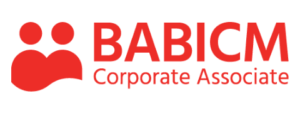Being the best – starting at the top
Managers need to understand how they can support employee engagement and well-being. And why…
Employee engagement and well-being is vital if you want to keep your people happy and productive – and retain valued members of your team. But this kind of culture must be supported from the top down – so to ensure it works properly, managers must be on board.
What the research says
And yet in recent CIPD research [CIPD Community: New tools to help you develop managers to support employee well-being and engagement, 22 Mar 2017], it appeared that less than half of the surveyed HR professionals believed that their company’s line managers had indeed bought into the importance of their staff’s well-being.
On the back of this research, the CIPD has teamed up with Affinity Health at Work and a number of research partners to come up with a selection of tools aimed at giving managers the tools and skills they need to ensure the well-being of their teams – called the Maturity Model [CIPD: Developing managers for engagement and well-being, 21 Feb 2017]
Being the best
Working on employee engagement and well-being is key to becoming a great company to work for. Every year, the Sunday Times Best Companies lists reveal which companies and not-for-profit-organisations are the best to work for.
And it’s not just for the blue chips and global giants – this accolade is something that all companies can work towards, whatever their size. It’s an aim that will reap its own rewards in terms of employee productivity and retention. There are eight specific segments to be considered – including leadership, how employees relate to their managers, and the level of engagement they have with their company. How staff feel about pressure at work and their life/work balance, their satisfaction with pay and benefits and how their growth within their job/career is managed are other vital criteria.
Here at Embrace HR we work with a number of SME’s to help them address these eight important areas as part of the ‘Best Companies’ programme. Take a look here to find out more: www.b.co.uk/factors/ [Best Companies: The 8 factors of workplace engagement]
Taking it from the top
These things need to start at the top though, so the maturity model, mentioned earlier, which can help those involved in people management identify where an organisation is at in terms of management development, is really useful in helping to bring you up to speed.
Once you have assessed where your company currently sits within the maturity model – at the lower end for instance (little or no competence) – you can work on the required processes to achieve the next level, and ultimately aim for the lofty heights of level 3 – competence.
So to use the maturity model, you would evaluate your company’s approach and current leadership development offering to work out what level you were starting at.
For instance, at level 2, your managers receive some support to develop their management skills, and the company culture and policies support effective management development.
You can start assessing your team and making plans to bring your managers to the next level in order to increase employee engagement and well-being by downloading the report and maturity model here [CIPD: Developing managers for engagement and well-being, 21 Feb 2017].
If you would like to discuss this subject further and learn how Embrace HR can help your business, please contact Cecily Lalloo at Embrace HR Limited.
T: 07767 308717 or contact us here.
Based in Aylesbury, Buckinghamshire, Embrace HR Limited supports business owners who do not have their own HR department or those that do but need help from time to time. We also work across the Home Counties of Oxfordshire, Bedfordshire and Hertfordshire, and also SMEs based in London.










